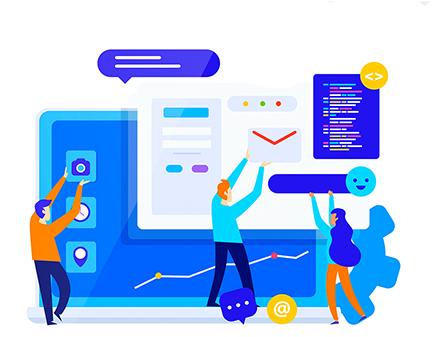User Training and Development in the context of IT focuses on educating and empowering end-users – the employees in an organization – to effectively utilize technology tools and applications. This process is vital for maximizing the productivity and efficiency of a workforce in a technology-driven environment. Here are the key aspects:
Customized Training Programs: Developing training programs tailored to the specific needs of the users, considering their existing skill levels and the specific software or tools they will be using.
Interactive Learning Methods: Employing interactive methods such as hands-on workshops, webinars, and simulation exercises. These methods are more engaging and can enhance learning and retention.
Focus on Practical Application: Emphasizing the practical application of skills in day-to-day work. This involves not just teaching how to use a tool, but also how it can be applied to streamline tasks and processes.
Ongoing Support and Resources: Providing ongoing support and resources, like help desks, online tutorials, and user manuals, to assist users as they apply their new skills in real-world scenarios.
Feedback Mechanisms: Implementing feedback mechanisms to continuously improve the training process. This could involve surveys, one-on-one interviews, or observation to assess the effectiveness of the training.
Incorporating Soft Skills Training: Including soft skills like problem-solving, critical thinking, and effective communication, which are essential for maximizing the benefits of technology in the workplace.
Adaptability to Change: Training users to be adaptable to technological changes and updates, fostering a culture of continuous learning and flexibility.
Certification and Skill Validation: Offering opportunities for certifications or skill validations, which can motivate users and acknowledge their competencies.
Role-Specific Training: Tailoring training sessions to specific roles within the organization. Different roles may require different levels of expertise and interaction with technology.
Accessibility and Inclusivity: Ensuring that training materials and methods are accessible and inclusive, catering to diverse learning styles and needs.
Leveraging E-Learning Platforms: Utilizing e-learning platforms for scalable and flexible learning opportunities, allowing users to learn at their own pace and on their own schedule.
Measuring Impact on Performance: Evaluating the impact of training on job performance and productivity. This helps in understanding the return on investment and the effectiveness of the training programs.
User Training and Development is an ongoing process that evolves with technological advancements and changing business needs. It’s crucial for organizations to invest in these programs to ensure that their workforce is competent, confident, and capable of using technology to its fullest potential.







